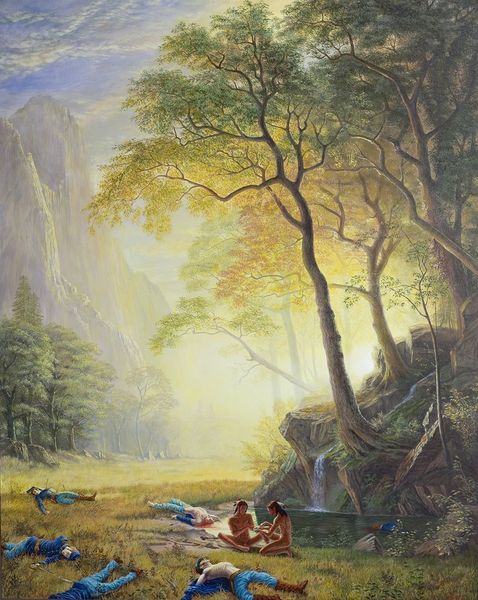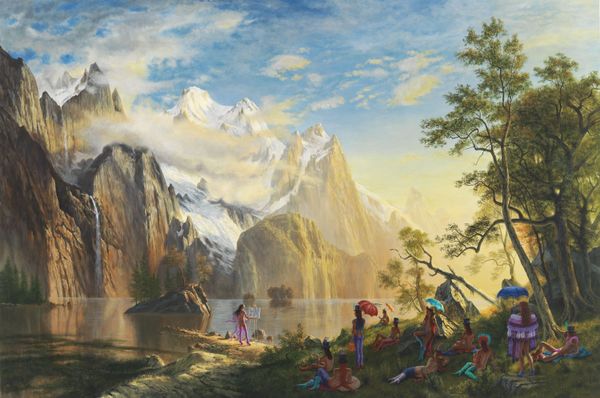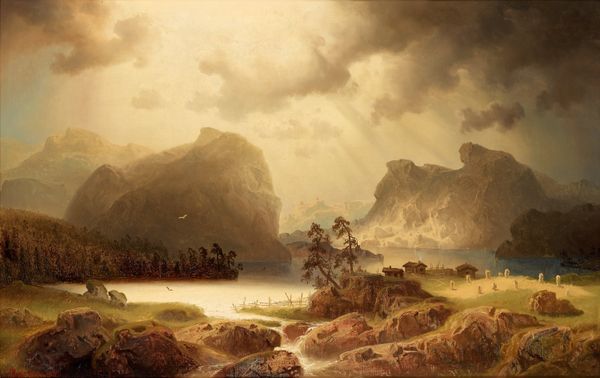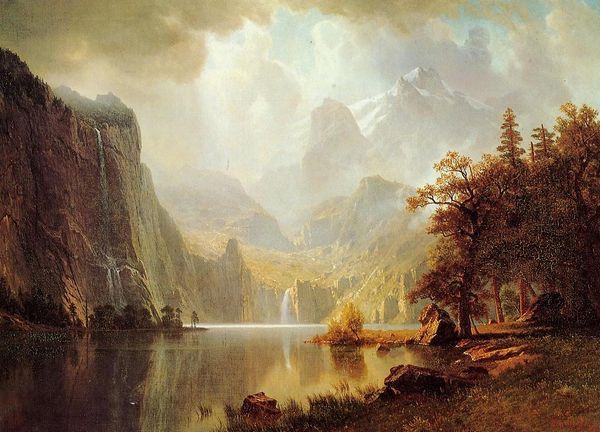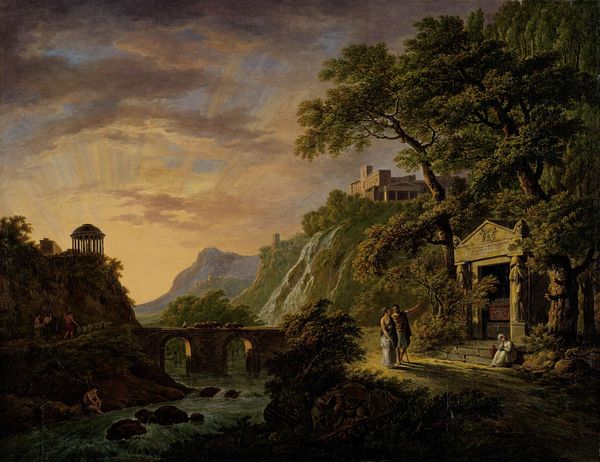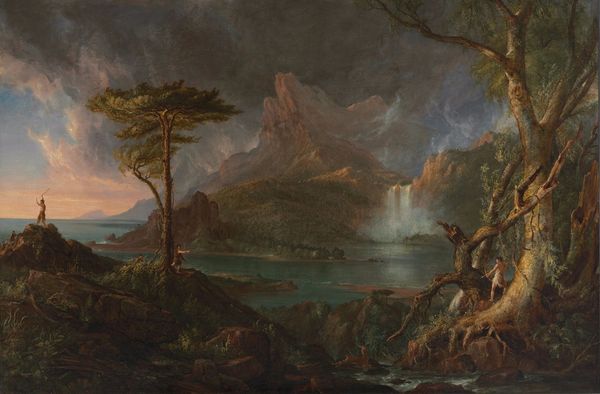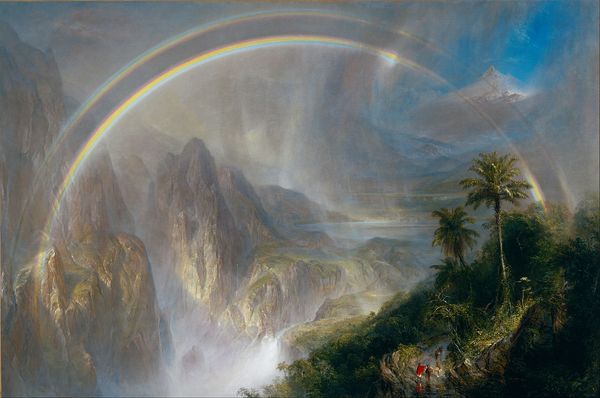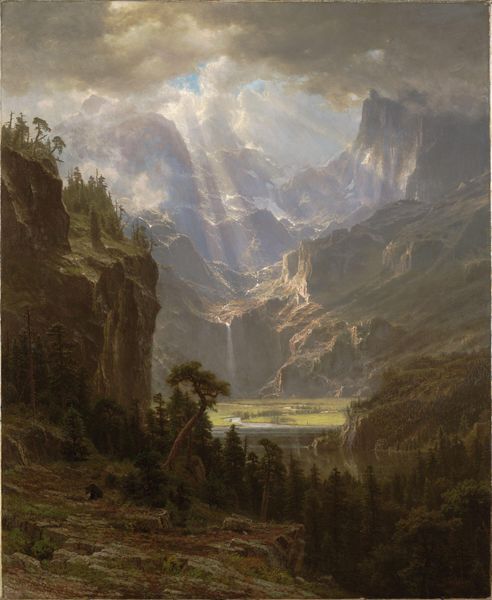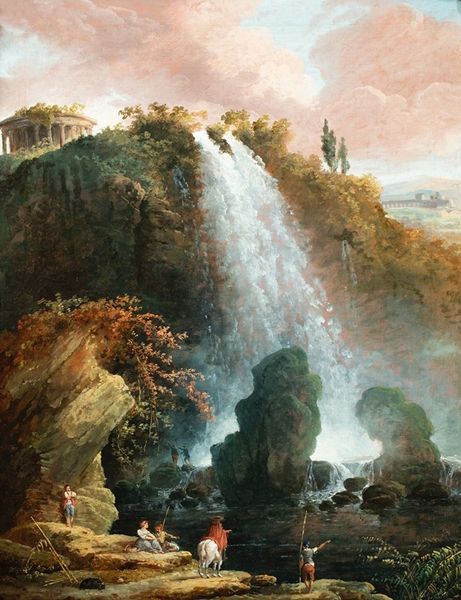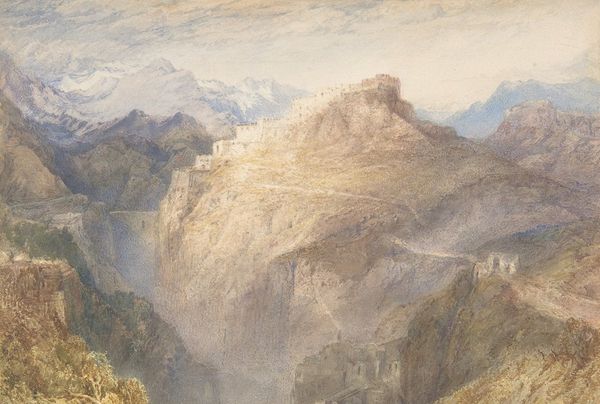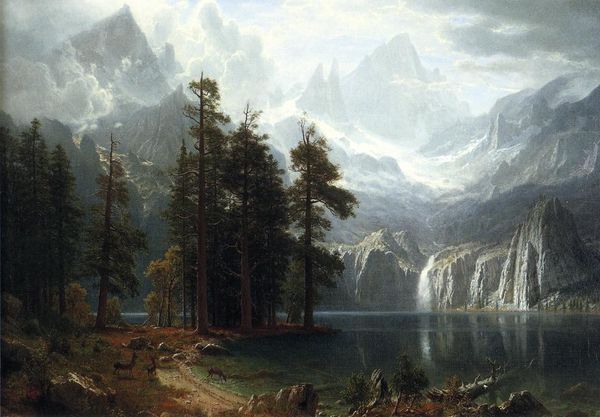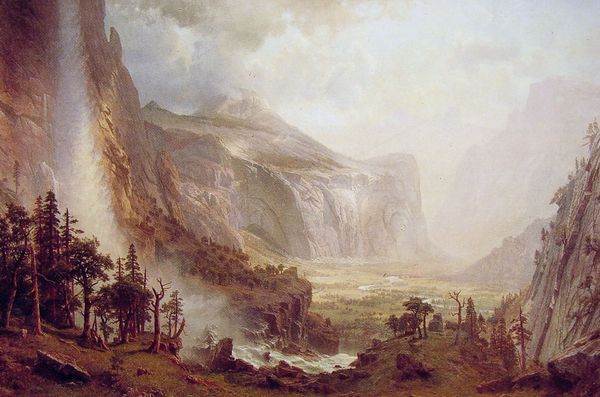
Copyright: Kent Monkman,Fair Use
Curator: "Empathy for the Less Fortunate" is an oil on canvas work crafted in 2011 by Kent Monkman. Its composition invokes history painting through the landscape style. What's your initial read? Editor: It strikes me as a Romantic vision, all grandeur and drama—but with a very peculiar intrusion. The natural scene is classically sublime: the misty mountains, reflective lake but there's something unsettling happening at the lake shore. Curator: Monkman often uses pastiche to unsettle conventional views on history and identity. By blending idealized landscape with incongruous figures, he brings forth the complexities of social narratives. That very disruption has a distinct socio-political edge, don't you think? Editor: Absolutely. The juxtaposition draws your attention to the figures themselves, particularly the European presence tending to Indigenous figures in distress. There is the symbol of enforced care here, as well as commentary on power. It feels laden with questions about the representation of history and compassion. Curator: His intentional use of romanticism recalls a specific cultural moment, in which these lands were viewed and presented to European audiences as sublime and open. His disruptions provide social and political commentary by re-situating figures from various moments in our cultural history in conversation with each other, through the use of satire. Editor: The symbolism runs deep. Water, traditionally seen as a purifying or life-giving element, is made to mirror those misty, uncertain power dynamics. It is nature reflecting the distorted image of cultural contact. Curator: In that light, perhaps Monkman prompts us to contemplate who defines "less fortunate," and the narratives we impose on vulnerable peoples. The politics of display is one layer but the political context to the themes in the work gives his statement a potent meaning. Editor: It's a disquieting scene, one that makes you question the comfort you might otherwise find in such a visually impressive setting. I see an act of re-visioning: daring us to reconsider who truly requires "empathy." Curator: A point well made. I believe this piece serves to push the viewer out of passive spectatorship and demands we become engaged interrogators.
Comments
No comments
Be the first to comment and join the conversation on the ultimate creative platform.

